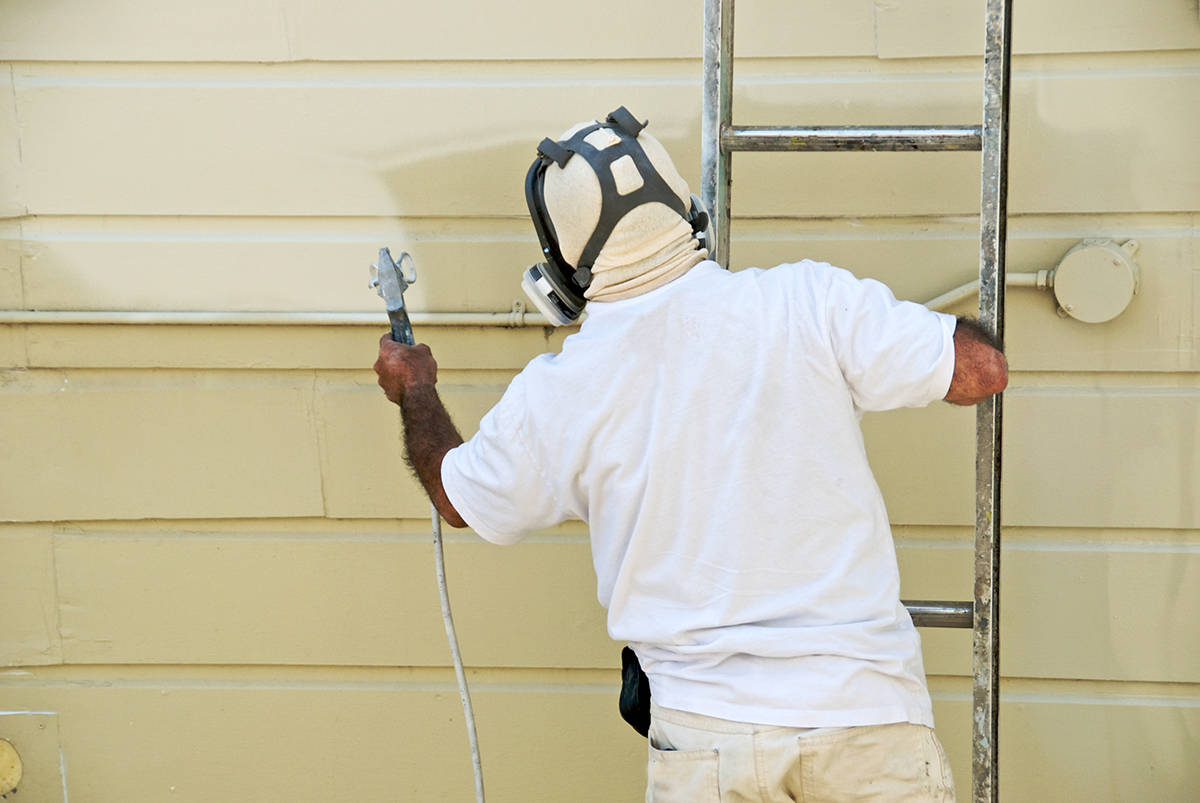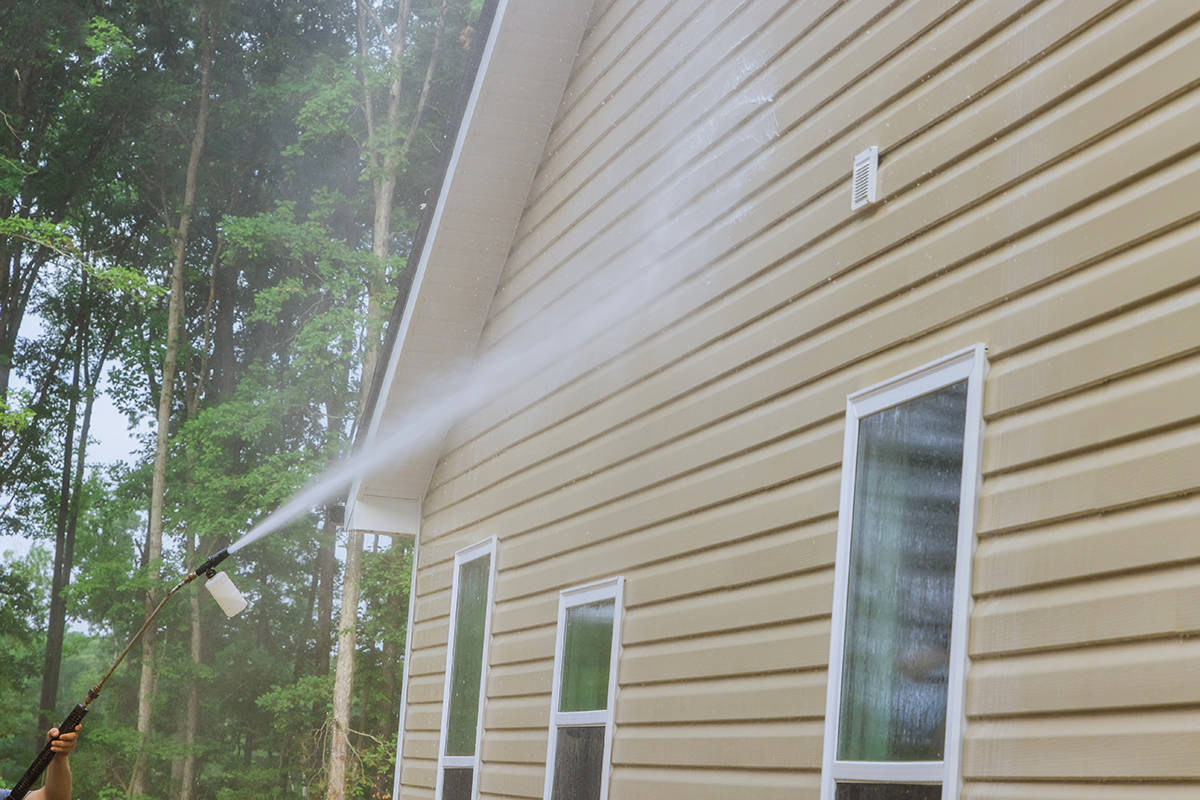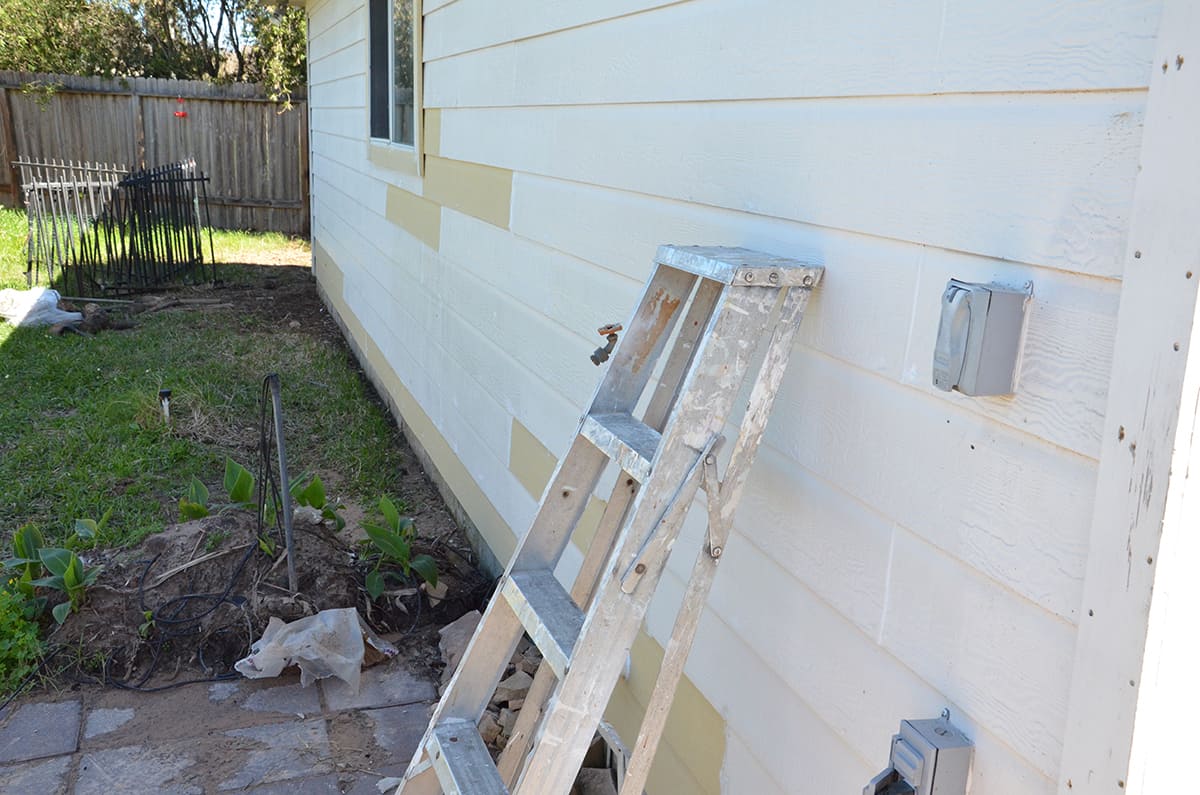Vinyl siding is one of the most popular types of siding for residential properties because it is more affordable that other alternatives, durable, and low maintenance. However, vinyl siding can fade and look worn over time, and it can be costly to replace.
Instead of replacing your vinyl siding, consider painting it to give the home a fresh look and extend the lifespan of the siding. This guide explains how to paint your vinyl siding for the best results.
Can You Paint Vinyl Siding?
Vinyl siding can be painted, which is great news if your vinyl siding is looking old and worn, and you want to give it a fresh look. You can also paint vinyl siding if you simply want a color change for the exterior of your home. Before making the decision to paint your vinyl siding, carefully think through these considerations.
Advantages of Painting Vinyl Siding
Color Change
Painting vinyl siding allows you to change the color of your home’s exterior, which can be beneficial if you want to update or refresh its appearance.
Cost Savings
Painting is generally less expensive than replacing vinyl siding, and you can save even more money if you paint the siding yourself rather than hiring a contractor to do it for you. Painting vinyl siding can be a cost-effective way to improve the look of your home, particularly if your existing siding is looking past its best and you don’t have the budget to replace it.
Extended Lifespan
Painting can extend the lifespan of your vinyl siding by protecting it from the elements and reducing fading.
Disadvantages of Painting Vinyl Siding
Warranty
Many vinyl siding manufacturers offer warranties that may be voided if you paint the siding. Be sure to check the warranty terms before proceeding.
Maintenance
Painted vinyl siding typically requires more maintenance than its natural-colored counterpart. You may need to touch up areas that show wear or damage over time.
Proper Preparation
Preparing the vinyl siding for painting is essential. If not done correctly, the paint may not adhere properly and could peel or chip.
Limited Color Choices
Dark colors can absorb more heat and cause the vinyl to expand and contract more, potentially leading to warping or damage. Some color limitations may apply based on the manufacturer’s recommendations.
Skill and Time
Painting vinyl siding is a labor-intensive process that requires attention to detail. It may not be a suitable DIY project for everyone, and hiring a professional painter can be costly.
Local Regulations
Some areas have regulations or restrictions on painting vinyl siding, so be sure to check with your local government or homeowners’ association if there are any guidelines to follow.
How to Prep for Painting Vinyl Siding
Preparing your vinyl siding for painting is an essential step if you want to ensure that you get a good finish that is durable and long-lasting. Follow these steps to properly prep your siding before painting.
Wash the Siding
A pressure washer is the most effective and most convenient way to wash your vinyl siding to prepare it for painting. First use the pressure washer to apply a vinyl cleaning solution to the siding, or alternatively mix some mild detergent or dish soap with water and apply this to the siding.
Start at the top of the walls and work your way down to prevent dirty water from running onto areas that have been cleaned. After applying the cleaning solution to all of the siding, use clean water to rinse all of the siding, removing any build up of dirt and grime in the process.
If there are any particularly stubborn stains or areas that don’t come up clean with the pressure washer, these should be cleaned by hand with a scouring brush, taking care not to scratch the siding as this will be visible when it has been painted.
Rinse Clean
After cleaning, use a hose to rinse the siding clean, and allow time for the siding to completely dry. This will vary depending on the weather, so aim to prepare the siding for painting on a dry and warm day.
Protect Surroundings
After your siding has been thoroughly cleaned and allowed to dry, you’ll need to protect the surrounding areas of your home so that primer and paint don’t find their way onto places they aren’t supposed to be.
Use decorators tape and sheets of newspaper to cover up your window frames and doorways if you don’t plan on painting them. Use dust sheets on the floor around your property to protect any decking, patios, or other exterior flooring that you don’t want paint dripping on to.
Prime Siding
The final step in preparing your siding for painting is to prime it. This is not always necessary, for example if you have bought an exterior paint that is a 2 in 1 primer and paint mix, or if you are painting the siding in a color very similar to the existing color.
Primer is useful if your siding isn’t in optimum condition because it can help to conceal minor flaws, and it also helps the paint adhere to the vinyl siding to help prevent peeling or scratching in the future.
If the color of paint you have chosen is drastically different to the existing color of siding, then priming can help ensure a professional finish and minimize the amount of coats of paint you will need. Apply one layer of primer and allow it to dry before moving on to painting the siding.
Steps for Painting Vinyl Siding
Once your vinyl siding has been properly prepared and primed, you can move on to painting it. Be sure to purchase an exterior acrylic latex paint, as this will ensure a professional finish and durability. There are a number of ways you can apply paint to your vinyl siding, depending on your preference.
A paint sprayer is a good option if you haven’t got the patience to hand paint the entire exterior of your property. Paint spraying can drastically cut down painting time, but you’ll need to take care to thoroughly cover all of the surrounding parts of your home such as windows, doors, and trim, because paint sprayers are much less accurate than painting with a paint brush or roller.
Choose a day to paint your siding when there isn’t a breeze, because a paint sprayer and a windy day can result in quite a mess. Alternatively, use a paint brush or roller to paint the vinyl siding by hand, working from the top of the house to the bottom.
Apply thin coats of paint, allowing each coat to dry according to the manufacturer’s instructions before moving on to the next coat. Typically you can expect to need a minimum of 2 to 3 coats of exterior paint on vinyl siding.
Tips for Painting Vinyl Siding
Choose the Right Paint
Select an exterior-grade acrylic latex paint that is specifically formulated for use on vinyl siding. These paints are designed to adhere well to vinyl and withstand outdoor conditions, ensuring a finish that looks professional and will hold up against a range of climate conditions.
Test Paint
Before applying the paint to the entire surface, test it in a small, inconspicuous area of the siding to ensure it adheres properly and dries to your desired finish. If you are unhappy with the finish or the color then you can try out a different paint before committing to the whole project.
Use a Brush and Roller
Paint with a high-quality brush and roller. A 4-inch brush is excellent for detail work, while a 9-inch roller with a medium nap is suitable for the main surface. Be sure to apply paint evenly and avoid heavy buildup for a smooth and professional finish.
Apply Thin Coats
Apply thin coats rather than thick layers. Thin coats adhere better and are less likely to peel, crack, or result in unsightly drips.
Overlap Strokes
When using a roller or brush, overlap your strokes slightly to create a uniform finish. This prevents visible lines or streaks in the paint.
Work in Sections
Divide the siding into manageable sections and work on one section at a time. Start at the top and work your way down to catch any drips. For a large wall, visually cut the area into quarters and work on one-quarter of the siding at a time.
Multiple Coats
You may need more than one coat to achieve the desired coverage and appearance. Follow the paint manufacturer’s instructions for the number of recommended coats.
Best Color for Painting Vinyl Siding
The best color for your vinyl siding depends on your style preferences and climate. Dark colors are not a good choice for hot climates because they can absorb heat and result in warping of the vinyl.
Lighter colors are a safer choice, though bear in mind that pale colors are more likely to show stains and may need to be maintained or touched up more frequently.








